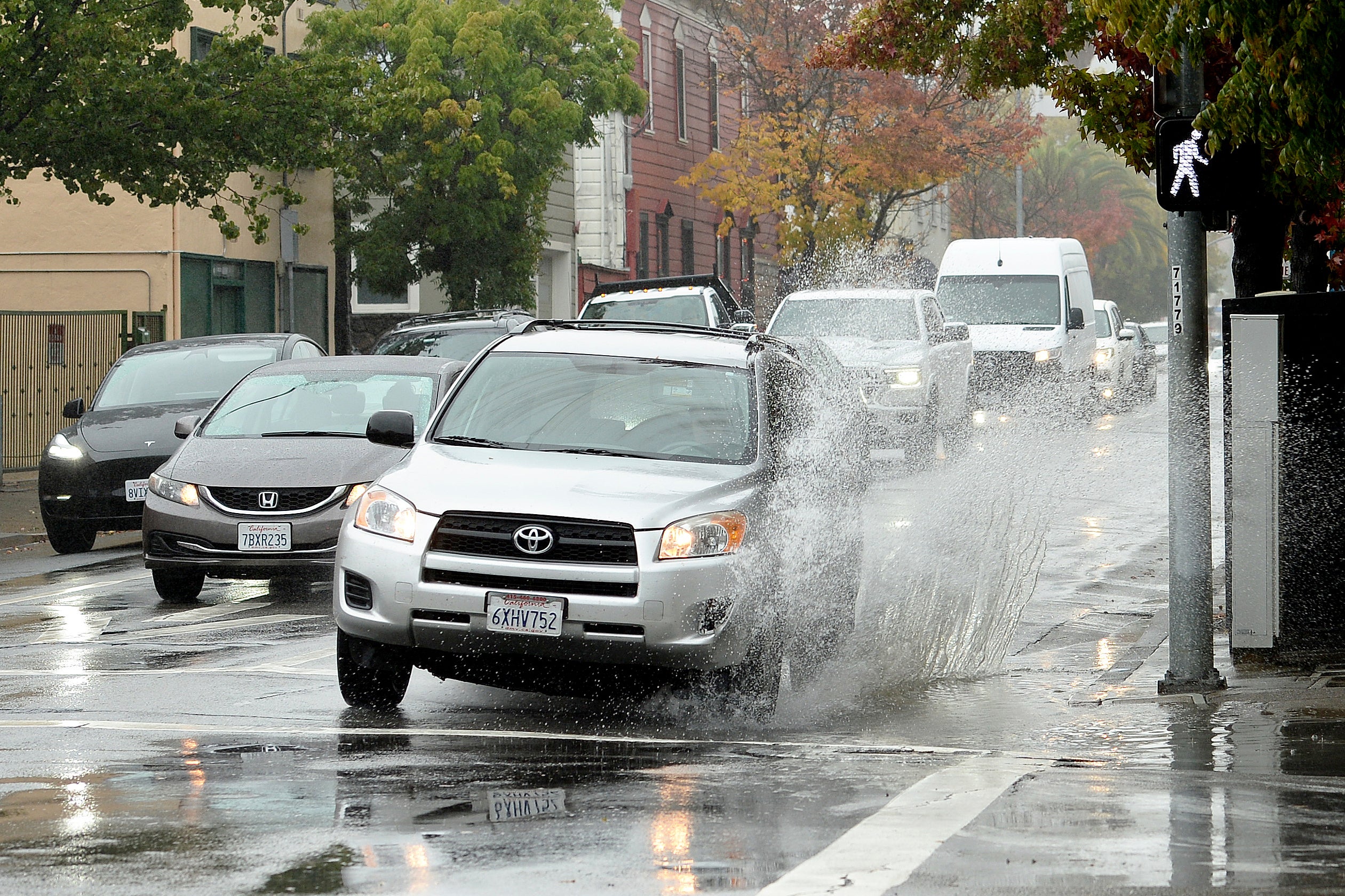Forecasters: California storm could bring 'historic' rain
A powerful storm roared ashore in Northern California, flooding highways, toppling trees and and causing mud flows in areas burned bare by recent fires as forecasters predict record-breaking rainfall

Your support helps us to tell the story
From reproductive rights to climate change to Big Tech, The Independent is on the ground when the story is developing. Whether it's investigating the financials of Elon Musk's pro-Trump PAC or producing our latest documentary, 'The A Word', which shines a light on the American women fighting for reproductive rights, we know how important it is to parse out the facts from the messaging.
At such a critical moment in US history, we need reporters on the ground. Your donation allows us to keep sending journalists to speak to both sides of the story.
The Independent is trusted by Americans across the entire political spectrum. And unlike many other quality news outlets, we choose not to lock Americans out of our reporting and analysis with paywalls. We believe quality journalism should be available to everyone, paid for by those who can afford it.
Your support makes all the difference.A powerful storm roared ashore Sunday in Northern California flooding highways, toppling trees and causing mud flows in areas burned bare by recent fires as forecasters predict record-breaking rainfall.
Drenching rain and strong winds accompanied the arrival of an atmospheric river — a long and wide plume of moisture pulled in from the Pacific Ocean that was predicted to move south over the next few days. The weather service’s Sacramento office warned of “potentially historic rain.”
Flooding was reported across the San Francisco Bay Area, closing streets in Berkeley and inundating the Bay Bridge toll plaza in Oakland. By sunrise on Sunday, Mount Tamalpais just north of San Francisco had recorded over 6 inches (15 centimeters) of rainfall during the previous 12 hours, the National Weather Service said on Twitter
About 150 miles (241 kilometers) to the north, the California Highway Patrol closed State Route 70 in Butte County because of mudslides within the massive Caldor Fire burn scar.
“We have already had several collisions this morning for vehicles hydroplaning, numerous trees falling, and several roadways that are experiencing flooding,” tweeted the highway patrol's office in Oroville. “If you can stay home and off the roads today, please do. If you are out on the roads, please use extreme caution.”
Burn areas remain a concern, as land devoid of vegetation can’t soak up heavy rainfall as quickly, increasing the likelihood of mudslides and flash flooding that could trap people.
“If you are in the vicinity of a recent burn scar and haven’t already, prepare now for likely debris flows,” the weather service said on Twitter. “If you are told to evacuate by local officials, or you feel threatened, do not hesitate to do so. If it is too late to evacuate, get to higher ground.”
South of San Francisco, evacuation orders were in effect in the Santa Cruz Mountains over concerns that several inches of rain could trigger debris flows in the CZU Lightning Complex Fire burn scar. Further south, parts of western Santa Barbara County were under an evacuation warning in the area burned by this month’s Alisal Fire.
Strong winds were also expected, with gusts of up to 60 mph (97 kph) at the windiest spots in Northern California Elevations above 9,000 feet (2,745 meters) in the Sierra Nevada could get 18 inches of snow or more from Sunday until Monday morning.
Recent storms have helped contain some of the nation’s largest wildfires this year. But it remains to be seen if the wet weather will make a dent in the drought that’s plaguing California and the western United States. California’s climate is hotter and drier now and that means the rain and snow that does fall is likely to evaporate or absorb into the soil.
California’s 2021 water year, which ended Sept. 30, was the second driest on record and last year’s was the fifth driest on record. Some of the state’s most important reservoirs are at record low levels.